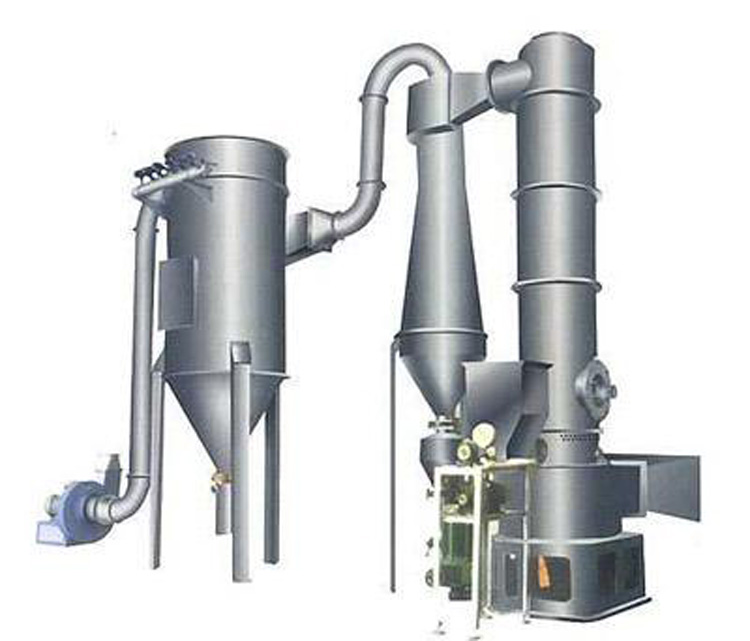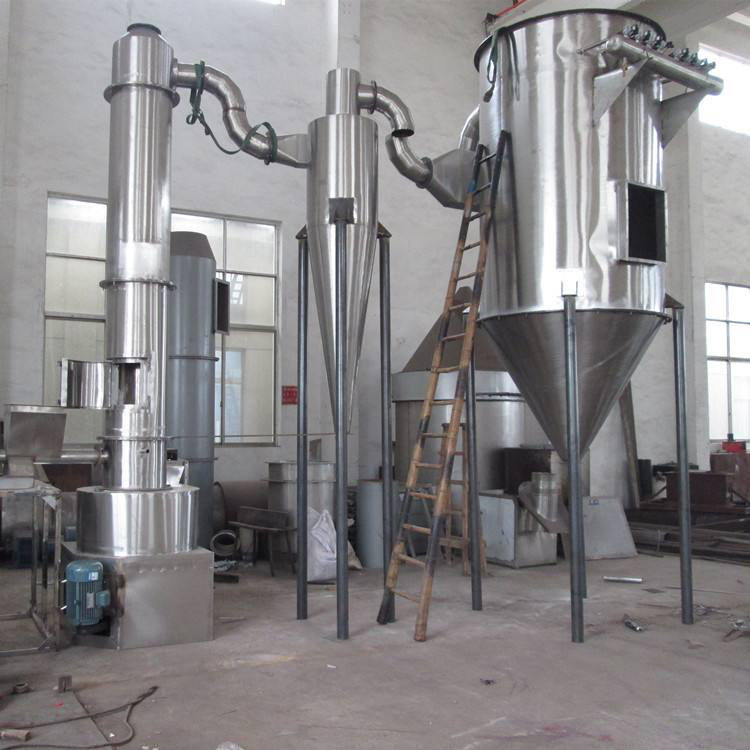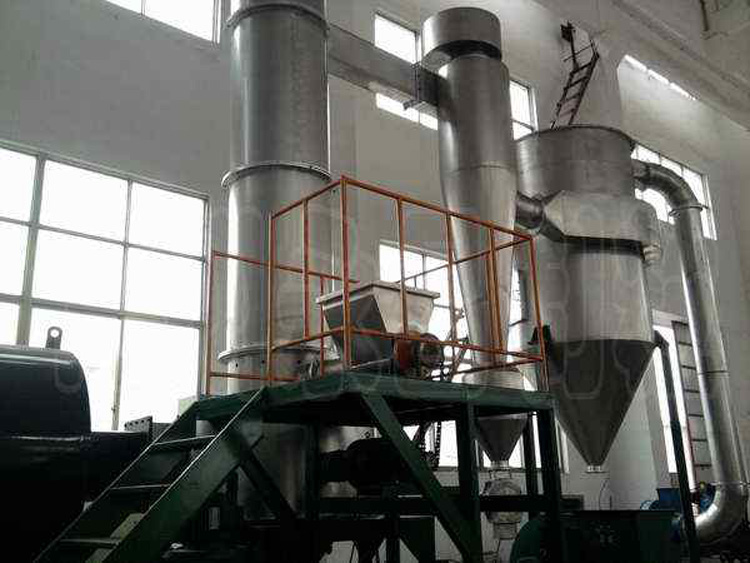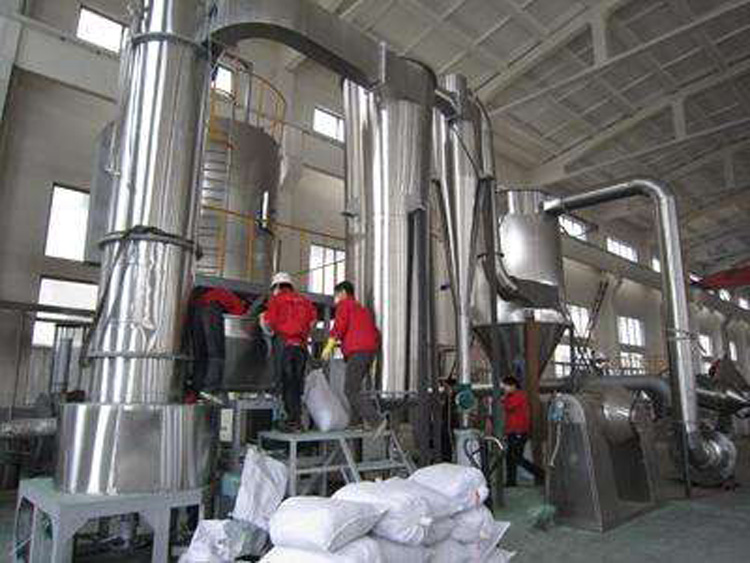Equipment Overview
The rotary flash dryer is a new type of drying equipment that combines drying technology and fluidization technology. It overcomes the disadvantages of high energy consumption in drying equipment and uneven drying in fluidized bed drying, integrating the strengths of both, and features rapid, efficient, and energy-saving characteristics. It compensates for the low drying efficiency and small output of paddle dryers and changes the complex process of dilution before spray drying required by spray dryers. Compared with other drying equipment, the rotary flash dryer is technologically advanced, compact, easy to operate, and convenient for maintenance. It enhances the heat transfer between gas and solid, significantly reduces drying time, greatly improves output and quality, and has a very noticeable energy-saving effect. It is particularly suitable for the direct drying of paste-like materials and filter cakes.
Working Principle
Hot air enters the bottom of the dryer tangentially and forms a strong rotating airflow field under the drive of the agitator. Paste-like materials enter the dryer through a spiral feeder, and under the strong action of the high-speed rotating stirring paddle, the material is dispersed by impact, friction, and shearing forces. Lumpy materials can be quickly crushed and then fully contact, heat, and dry with hot air. Dehydrated dry materials rise with the hot air current, and large particles are retained by the classifier ring, while small particles are discharged from the center of the ring outside the dryer, then recovered by the cyclone separator and bag filter. Materials that do not meet the drying requirements or large lumps are thrown against the wall by centrifugal force, fall back to the bottom, and are crushed before drying.
Process Flow Diagram
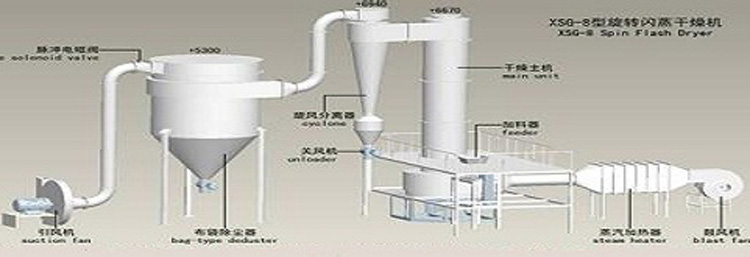
Structural characteristics
The organic combination of crushing, swirling, fluidization, and grading technologies.
The equipment has a compact structure, small size, high efficiency, and can be continuously produced, achieving "small equipment, large production".
High drying intensity, low energy consumption, and high thermal efficiency.
The material has a short residence time, good product quality, and can be used for drying heat sensitive materials.
Negative pressure or micro negative pressure operation, good sealing, high efficiency, and elimination of environmental pollution.
Technical specifications

Note: 1 The water evaporation rate is the amount of water evaporated per hour at an inlet temperature of 180oC and an outlet temperature of 80oC,
2. In addition to the above models, special designs can be made for users,
3. The above installed capacity is standard matching, and can be significantly reduced according to different power matching of materials.
Applicable materials
Organic compounds: atrazine (pesticide insecticide), lauric acid, benzoic acid, benzoic acid, fungicide, sodium oxalate, cellulose acetate, organic pigments, etc.
Dyes: anthraquinone, black iron oxide, indigo pigment, butyric acid, titanium hydroxide, zinc sulfide, various azo dye intermediates.
Inorganic substances: borax, calcium carbonate, hydroxides, copper sulfate, iron oxide, barium carbonate, antimony trioxide, various metal hydroxides, various heavy metal salts, synthetic cryolite, etc.
Food: soy protein, gelatinous starch, wine trough, wheat sugar, wheat starch, etc.
Material drying application (based on Type 6 flash evaporation)
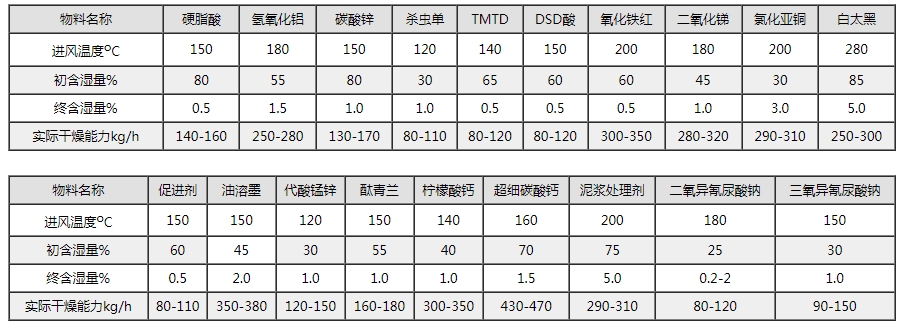
Hot Tags: Spin Flash Dryer Flash drying machine Structure of Flash Drying Machine


